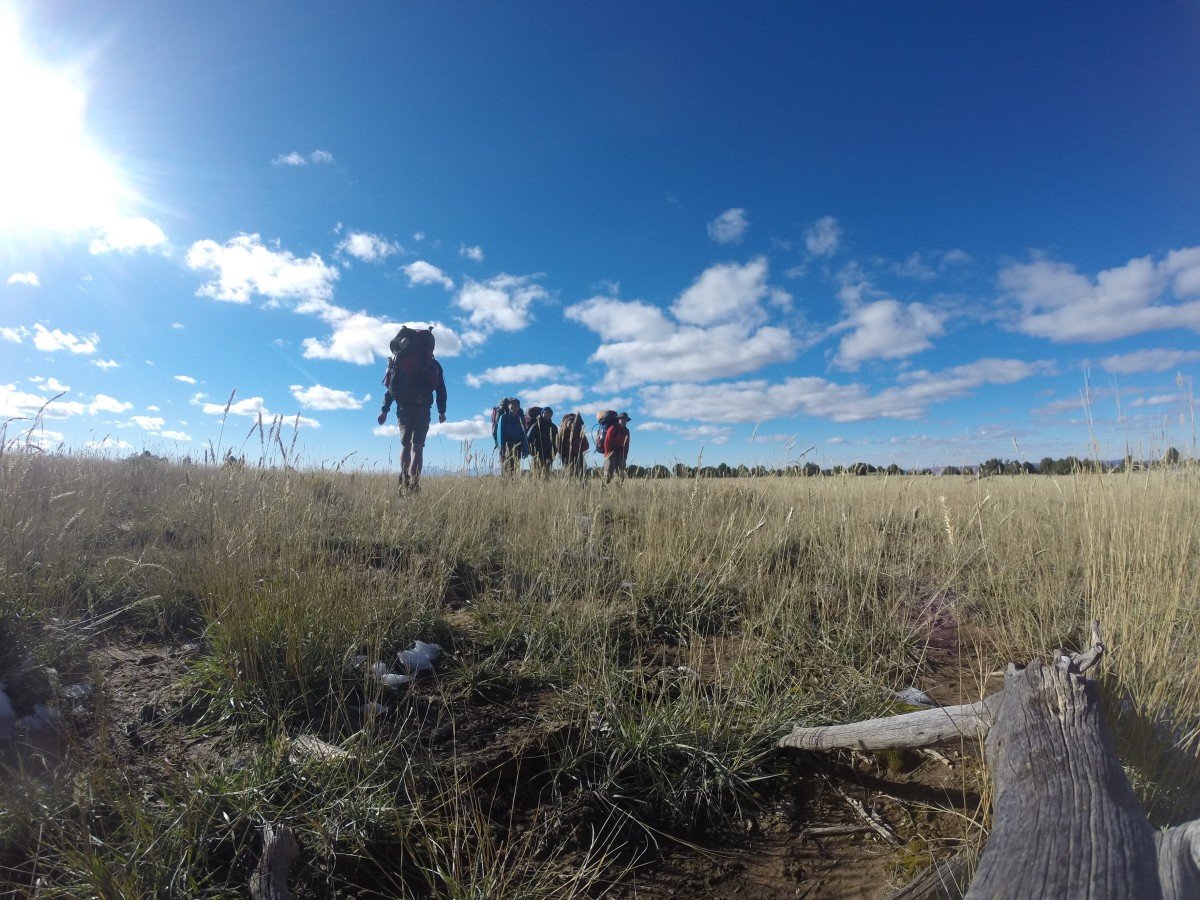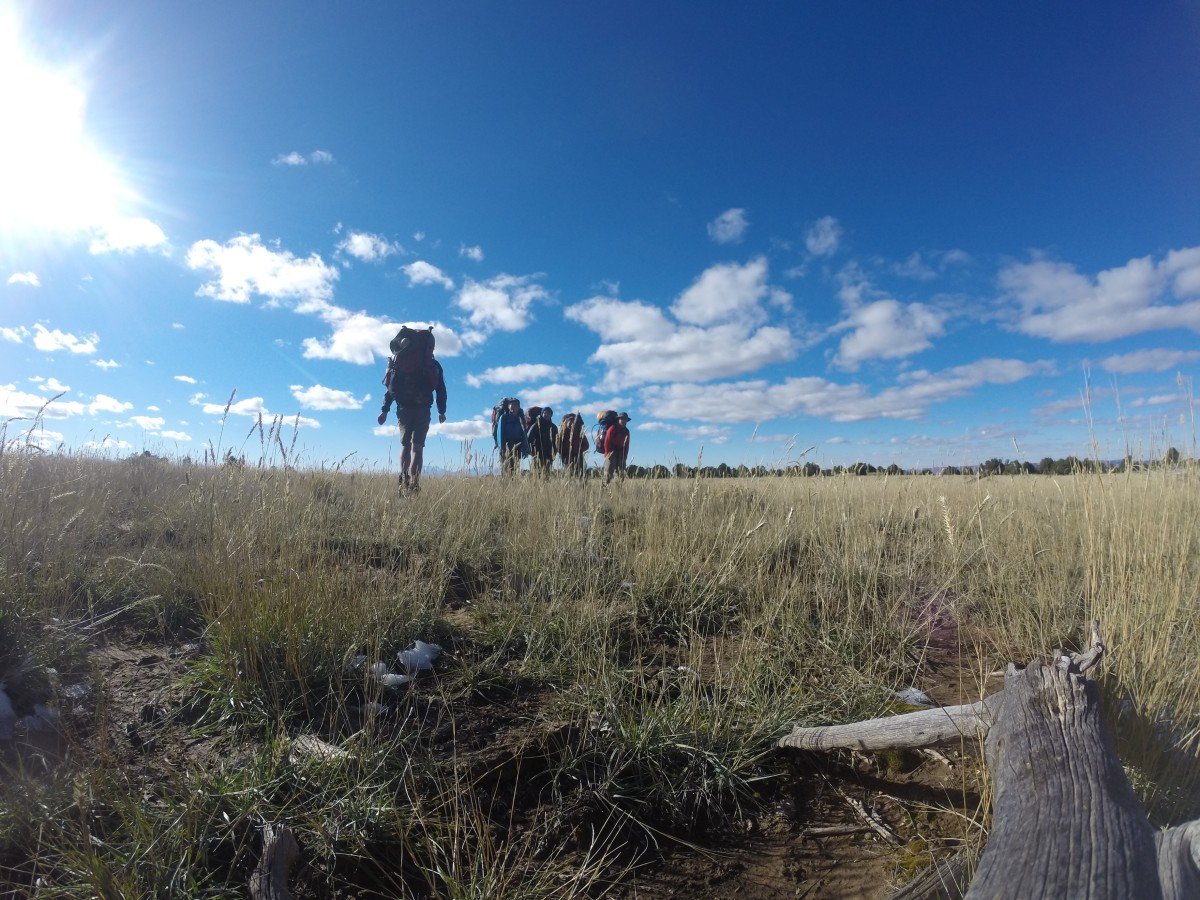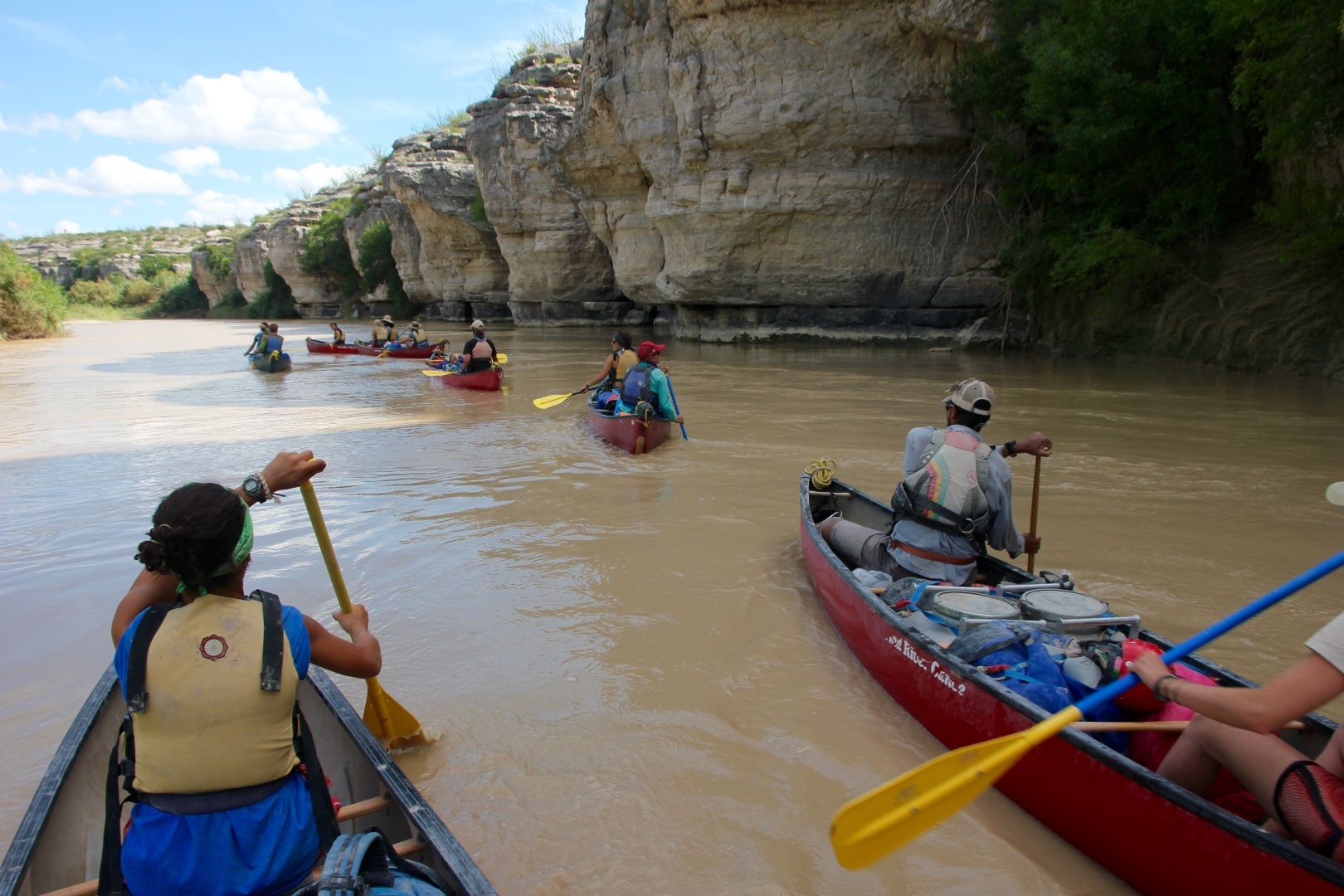
Photo by Ashley Wise
THE SETTING
You’re leading a canoe trip for a group on the Rio Grande River in Big Bend National Park in Texas. It’s been a hot trip, with temperatures well over 90°F (32°C) day after day. Today, the group started off with a long morning hike up a side canyon, and now you’ve been paddling for several hours, floating lazily along, watching birds swoop around the limestone cliffs.
Suddenly, your observations are interrupted by yells for help downstream. You paddle quickly to a beached canoe and several people on shore. One of your participants is shouting something about a seizure.
Another participant is lying on their back in the sand. Their legs are quivering, but their arms seem to be moving normally. The other participant insists this is a seizure—you’re not so sure.
You sweep the scene for safety and assess that no one is in the water and there are no obvious hazards. There is only one patient who is obviously in pain. You put on your gloves and do an initial assessment. Airway, breathing, and circulation (ABCs) are good. There is no bleeding, spine injury mechanism or apparent injuries. You know the hot environment is a stressor and plan to address that promptly.
SOAP Report
Subjective
The patient is a 43-year-old with spasms in their legs.
Objective
The patient is lying on their back, crying out in pain with obvious spasms in their legs. The patient says these spasms began a few minutes before, as they were kneeling in the canoe. The patient is A+Ox4 (alert and oriented to person, place, time, and situation) and denies losing responsiveness or being submerged in the river. The head-to-toe exam does not reveal any obvious sign of injury.
Vital Signs
|
Time |
4:25pm |
|
Level of Responsiveness (LOR) |
A+Ox4 |
|
Heart Rate (HR) |
100, strong, regular |
|
Respiratory Rate (RR) |
28, shallow, unlabored |
|
Skin Color, Temperature, and Moisture (SCTM) |
pink, warm, sweaty |
|
Blood Pressure (BP) |
radial pulses present |
|
Pupils |
Pupils equal, round, responsive to light (PERRL) |
|
Temperature (T°) |
99°F /37.2°C oral |
HISTORY
|
Symptoms |
Patient complains of dizziness, nausea, and painful leg cramps. |
|
Allergies |
None |
|
Medications |
Denies over-the-counter, herbal or recreational medication. Takes high blood pressure medication and is on their normal dosing schedule. |
|
Pertinent Hx |
Mild hypertension. Patient states they have “a cold and an upset stomach.” |
|
Last in/out |
Patient’s hydration status is unclear. They state they drank 3 liters of water each, today and yesterday. Did not eat today. No bowel movement today. Urinated twice today. Urine color unknown. |
|
Events |
Paddling and hiking in hot, windy weather the past three days. |
STOP READING!
What is your assessment and plan? Take a few minutes to figure out your own assessment and make a plan. Don’t cheat—no reading on without answering this first!
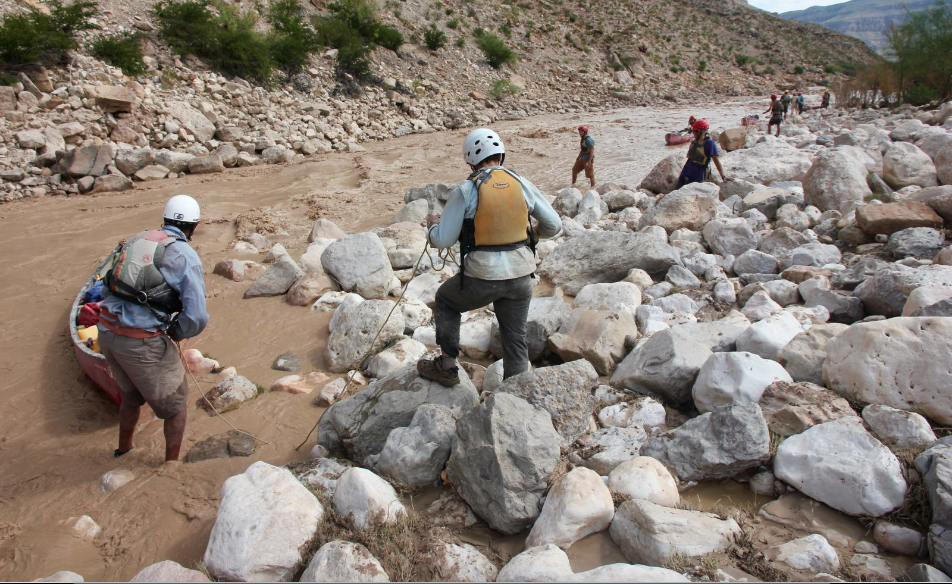
Photo by Ashley Wise
Assessment
- Possible heat cramps
- Possible heat exhaustion
- Possible hyperventilation
Plan
- Move patient to shade. Use cool wet compresses to lessen heat stress.
- Stretch patient’s legs gently to try to relieve cramps.
- Calm the patient to manage hyperventilation.
- Hydrate and feed patient.
Anticipated problems
- The muscle spasms cannot be relieved.
The Tale Continues
Quickly, you are able to rule out that this patient is having seizures since the patient is awake, has never lost responsiveness, and the spasms look like muscle cramps rather than seizures.
Since it's such a hot day, you suspect that this could be a heat-related condition. You think about the immediate life-threat of heat stroke, but this is an unlikely explanation because the patient has a normal level of responsiveness (LOR) and their body temperature is not elevated. Fluid intake has not been excessive, so it’s also unlikely to be hyponatremia.
After ruling out life threats, you treat the obvious: you get this patient out of the sun and try to reduce bodily stress being caused by the heat (heat stress) with cool, wet compresses applied to their forehead, trunk, and extremities. You place the patient on a pad to insulate them from the hot beach sand.
Then, you begin to treat the muscle cramps by gently stretching and straightening the patient’s legs. It seems like the worse case of “charley horse” muscle cramps you’ve ever seen; no wonder the patient is in pain.
Vital Signs
|
Time |
4:25pm |
4:55pm |
|
Level of Responsiveness (LOR) |
A+Ox4 |
A+Ox4 |
|
Heart Rate (HR) |
100, strong, regular |
90, strong, regular |
|
Respiratory Rate (RR) |
28, shallow, unlabored |
24, shallow, unlabored |
|
Skin Color, Temperature, and Moisture (SCTM) |
pink, warm, sweaty |
pink, warm, sweaty |
|
Blood Pressure (BP) |
radial pulses present |
radial pulses present |
|
Pupils |
PERRL |
PERRL |
|
Temperature (T°) |
99°F /37.2C oral |
99°F /37.2C oral |
About 15 minutes into this event the patient begins to complain of cramping in their hands. At this point you recognize their high respiratory rate must be controlled, by having them slow their breathing, to prevent hyperventilation.
After 30 minutes of stretching, the leg cramps subside to “quivering.” The patient’s hand cramps also subside and their respiratory rate slows.
You now take a few minutes to review your SOAP note and consider the heat-related illnesses that this could be.
Again, heat stroke is unlikely since the LOR has been normal and the patient’s oral temperature is 99°F (37.2°C). The history of three liters of water intake a day, not eating well, and the environmental conditions of extreme heat over several days has you suspicious of heat exhaustion and dehydration. The cramps may be due to the low fluid and food intake (an electrolyte imbalance).
Notes from NOLS on Heat Illness
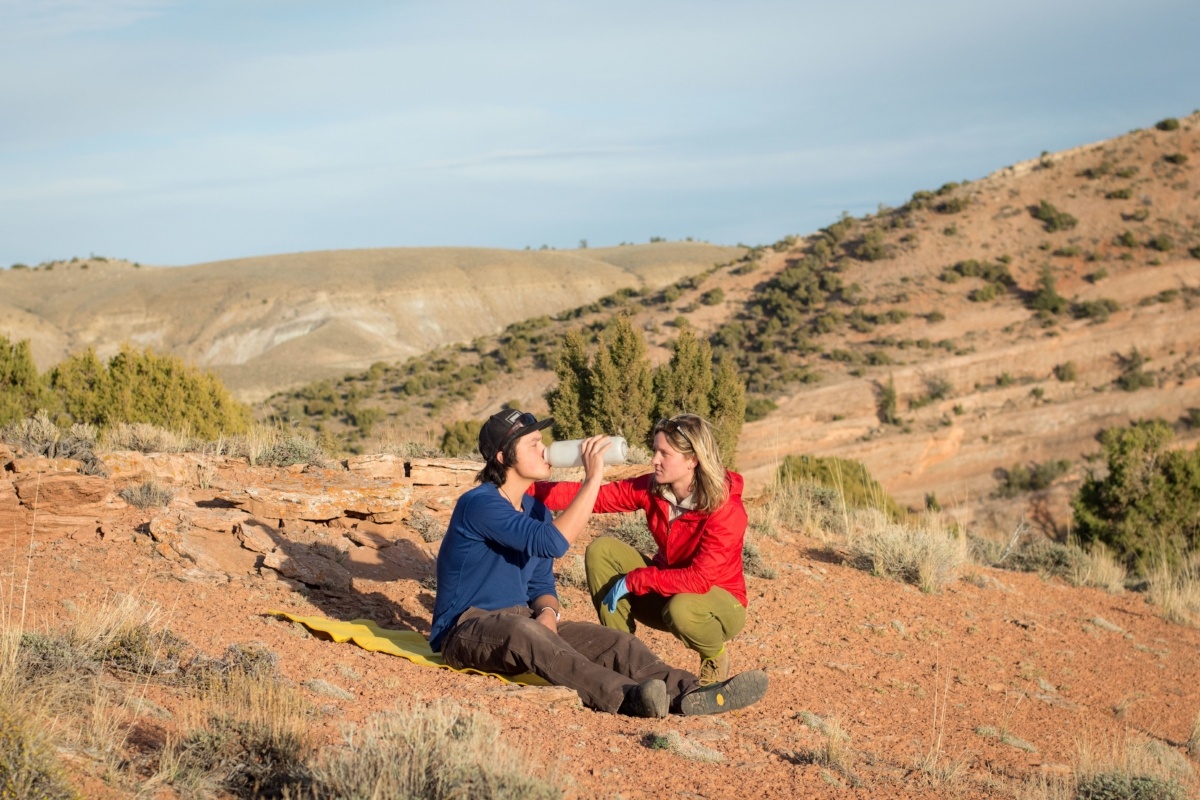
Photo by Jared Steinman
In cases of suspected heat illness, your biggest concern is recognizing and treating the patient’s condition to prevent their progression to heat stroke.
Heat stroke patients have exaggerated heat production and an inability to cool themselves due to environmental heat stress (classic heat stroke) or from exertion in the heat (exertional heat stroke).
Signs and symptoms include changes in level of responsiveness, body temperature above 104°F (40°C), and increased heart and respiratory rates. Skin signs are variable, with some people having hot and dry skin while others sweat.
Other less serious heat-related conditions, like heat exhaustion, dehydration, and heat cramps, arise from the body’s inability to cope with stress caused by heat. The patient in this scenario exhibits several signs and symptoms of heat exhaustion: weakness, fatigue, headache, dizziness, thirst, nausea, vomiting, muscle cramps, and heightened pulse and respiratory rates. They may also be dehydrated. It is less important to differentiate between these various conditions, since all are treated in basically the same way.
Altered mental status, which is a distinguishing feature of heat stroke but not heat exhaustion and dehydration, is an important indicator of whether a heat illness incident is life-threatening or simply requires lessening the patient’s heat stress.
Heat cramps, which can be associated with heat illness, present themselves as painful muscle contractions following exercise in hot conditions. It isn’t entirely known what causes these cramps, but it may be a combination of a lack of sodium, potassium, and calcium mixed with muscular fatigue.
End of the Tale
Your treatment plan is to camp where you are for the night so you can address the heat stress from the environment and the patient’s hydration by giving them time to eat, drink, and rest. You have the patient slowly drink a simple electrolyte solution (1 tbsp salt/liter) and monitor them through the evening.
The rest also gives time to make sure the cramps have fully subsided. The patient's legs are sore, but by the evening the patient is walking, saying they are fine and feeling comfortable. Reassured, you plan to watch them closely tomorrow and monitor closely how much they are eating, drinking, urinating, and managing the heat.
Recertify to refresh your wilderness medicine skills for the summer.
Written By
Tod Schimelpfenig
As a NOLS Instructor since 1973 and a WEMT, volunteer EMT on ambulance and search and rescue squads since the 70s, Tod Schimelpfenig has extensive experience with wilderness risk management. He has used this valuable experience to conduct safety reviews as well as serve as the NOLS Risk Management Director for eight years, the NOLS Rocky Mountain Director for six years, and three years on the board of directors of the Wilderness Medical Society, where he received the WMS Warren Bowman Award for lifetime contribution to the field of wilderness medicine. Tod is the founder of the Wilderness Risk Manager’s Committee, has spoken at numerous conferences on pre-hospital and wilderness medicine, including the Australian National Conference on Risk Management in Outdoor Recreation, and has taught wilderness medicine around the world. He has written numerous articles on educational program, risk management and wilderness medicine topics, and currently reviews articles for the Journal of Wilderness and Environmental Medicine. Additionally, he is the author of NOLS Wilderness Medicine and co-author of Risk Management for Outdoor Leaders, as well as multiple articles regarding wilderness medicine. Tod is the retired curriculum director for NOLS Wilderness Medicine and is an active wilderness medicine instructor




